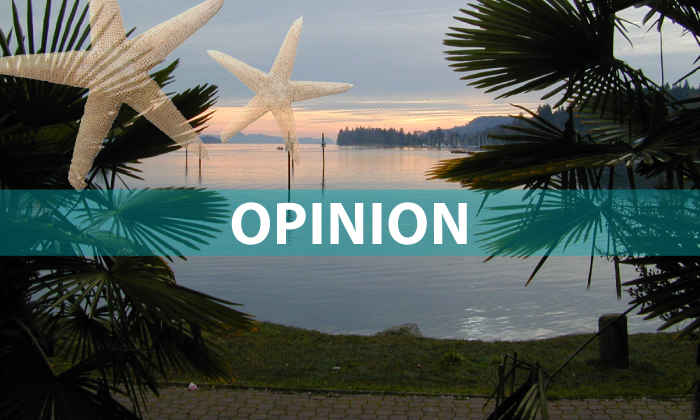By DAVID J. RAPPORT
A version of the following was sent to North Salt Spring Waterworks District (NSSWD) CAO Mark Boysen and board chair Brian Pyper and filed with the Driftwood for publication.
Re.: KWL Engineers’ Draft Report “St. Mary Lake and Maxwell Lake Reliability Assessment” commissioned by the NSSWD.
I am writing in reference to the above-mentioned draft report, in which KWL Engineers model and project water balances for Maxwell and St. Mary lakes, month by month, all the way to the year 2100, concluding that Maxwell Lake (although not St. Mary Lake) will have sufficient reliable water to support 300 new household connections. Having reviewed this report, my considered assessment is that this conclusion, on which NSSWD relies in considering a partial lifting of its longstanding moratorium on new water allocations, is not based on solid science and is entirely unwarranted.
Over the past four decades, I have undertaken numerous assessments of the health of aquatic and terrestrial ecosystems under anthropogenic stress for various national and international bodies. Unsurprisingly, a recurrent finding in work of this sort is that global warming is having a pervasive impact on the state of the world’s ecosystems and its resources.
In fact, projecting the future state of aquatic and terrestrial ecosystems has become ever more uncertain for two main reasons. Firstly, predictions are heavily impacted by the degree of global warming, which in turn rests heavily on the success (or lack thereof) of the world’s nations in curbing their emissions of greenhouse gases between now and 2100 — a factor that is unknowable. Secondly, predictions are heavily dependent on climatologists’ capacity to understand the increasingly complex climate dynamics — a capacity that has been repeatedly stymied by all kinds of unanticipated surprises as the globe heats up.
Considering these overarching factors, it seems clear that peering into the climate crystal ball to glimpse the future state of our small island’s aquatic ecosystems (including the volume of available water over time) amounts to little more than a pipe dream. The fact is that engineers’ work demands far greater certainty than our ever-changing sociopolitical, climatological and ecological environment provides. To come up with their projections, the KWL team had to essentially ignore all the complexities and uncertainties, and act as if clear, long-term projections were possible — and possible with as much as 98 per cent reliability, to boot!
Furthermore, diverting waters in the winter season from Rippon Creek and Larmour Creek through the Rippon diversion into Maxwell Lake might sound terrific, if it weren’t for the fact that our forests, with increasing summer heat stress, are drying out and becoming ever more fire-prone. Starving them of replenishing water and moisture through such stream diversions strikes me as a most unwise and risky move. And that is not the only danger involved in “robbing Peter to pay Paul.” There is also the danger of mixing waters in the lake basins through transfer of microfauna and flora, which in their new environments may take hold as invasive species, upsetting the existing ecological order. This is no trivial matter, yet no mention of this major and well-documented ecological risk is to be found in the consultants’ report. Visualizing our lakes as ecosystems and not simply as reservoirs seems beyond the mindset of those who drafted this report.
While they valiantly tried to pull the proverbial rabbit out of the hat by means of sophisticated statistical manipulations, no statistical tricks can get around the fact that the climate dynamic under global warming, at levels unprecedented in human history, remains poorly understood, and that the future of climate policy and action is virtually unknowable. Under these conditions, it is patently absurd to assume that any meaningful projections for water balances for our lakes far into the future can be obtained.Regrettably, I have to conclude that this draft engineering consultants’ report is far from being “comprehensive and heavy on the science,” let alone “getting us really close to the best available science, and recognized approaches to tackling this kind of issue,” as the NSSWD chair is quoted as saying in the Sept. 4 Driftwood.
In my view, to proceed with a partial lifting of the moratorium based on these projections, and to consequently commit to supplying an additional 300 households with drinking water in perpetuity, would be foolish and beyond irresponsible. The consequences would most likely come back to haunt NSSWD, perhaps far worse than was the case several years back with the aerators fiasco. I don’t say this lightly, as I am well aware that the housing shortage remains a serious issue on Salt Spring (and elsewhere). Yet, the stark reality is that we simply can’t afford to play Russian roulette with our island’s undeniably uncertain future water supply.

